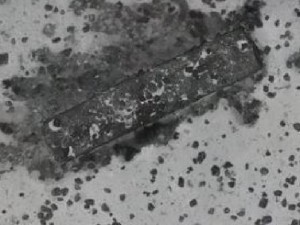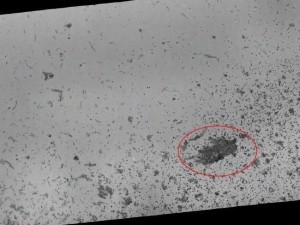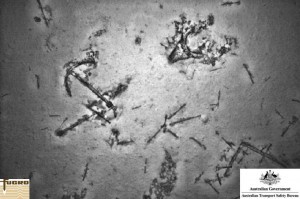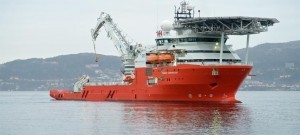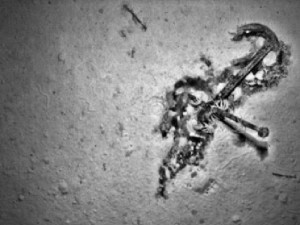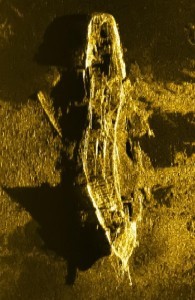Underwater pictures show a sunken “treasure chest” which was spotted after the vessel searching for missing flight MH370 went dark for more than three days last week.
The chest is resting at the bottom of the southern Indian Ocean, almost four kilometers beneath the surface, in a debris field known as Shipwreck #1, thought to be the remains of a wooden cargo ship dating back to the early 1800s.
(The mysterious chest found near a shipwreck in the southern Indian Ocean)
Nearby is Shipwreck #2, likely to be the carcass of the SV Inca, a Peruvian transport vessel which vanished en route to Sydney in 1911.
Both wrecks are located in the south of the current search area along the 7th arc, more than 2,000km off the coast of Western Australia, reports News.com.au.
In fact, a total of four shipwrecks were found by Fugro, the company contracted to find MH370 during the previous, Australia-led search, but more on the others later.
It was in the vicinity of Shipwreck#1 and Shipwreck#2 that search vessel Seabed Constructor switched off its Automatic Identification System (AIS) on January 31, making it impossible for observers to track its position as they had so faithfully been doing up until that point.
(The chest belongs to a sunken cargo ship which vanished in the early 1800s)
Unsurprisingly, “going dark” rekindled conspiracy theories about the fate of the doomed Boeing 777, which vanished from radar less than an hour after take-off en route from Kuala Lumpur to Beijing with 239 people on board.
It also fuelled rumours the crew had either found something of great interest or made a detour to retrieve the mysterious chest, which, the internet mused, could well be full of treasure.
(An anchor and other bits of debris are pictured on the ocean floor)
We now know Constructor did find something – two anomalies which turned out to be geographical rather than man-made – and that the box remains unopened in its watery grave, as mysterious as ever.
On March 7 2015, excitement broke out among the crew members of Fugro Equator after its sonar system detected what appeared to be a debris field.
The cluster of objects was spread across the sea floor in the southern part of the search area, 12 nautical miles to the east of the 7th arc.
As Fugro CEO Paul Kennedy would later tell a conference in Perth: “We got really excited”.
(The Seabed Constructor has been offered more than £39.5million to find the missing aircraft)
After initially thinking they had found a MH370 debris field, they soon realized they had found a shipwreck.
MR Kennedy said: “We don’t know where the ship came from.
“The WA Maritime Museum have got no records of the boat – it may have been coming from South Africa to Australia and just got lost and everybody died on board.”
The anchor turned out to be a valuable clue; it was of a style that manufacturers stopped making around 1820, making the ship around 200 years old.
Apart from a bell and some bracketry, the only other item from the wooden ship that hadn’t dissolved over the centuries was a rectangular box. Mr Kennedy called it a chest.
(The cluster of man-made objects initially thought to be a debris from MH370 but which turned out to be the disintegrated wreck of a 200-year old timber cargo ship)
“What there is down there, the only thing that’s really left, is a big chest,” he told the conference.
“Three meters long and maybe a meter and a half wide and it’s still closed.
“And the whole ship was deteriorating and coming away…and there’s this big chest in about 4,000 meters of water, and our question was ‘what’s in the box?’”
Don Thompson, an original member of the MH370 Independent Group (IG) which advised the government on the possible whereabouts of the missing plane, said he believed the box was likely used to store water.
“The Fugro report incorporated in the ATSB’s Final Operational Report even describes the box as a ‘water tank’,” Mr Thompson told news.com.au.
(Maritime experts established the style of anchor pictured in this sonar image was discontinued by manufacturers in 1820)
“It was something I’d also researched as a plausible explanation.
“Water in wooden barrels became tainted over long voyages so ships began to use metallic ‘water boxes’. They didn’t call them ‘tanks’.”
That’s not to say there isn’t gold down there. We still don’t know for sure ‘what’s in the box’ because it has never been opened.
(One of the stunning sonar images of the wreck believed to be the SV Inca, which vanished en route from South America to Australia in 1911)
A total of four wrecks were found along the 7th arc during Fugro’s search for MH370.
Shipwreck#3 was found further north in the search area at depths of more than 3,700 metres and is believed to be a “recent fishing vessel, found upright, intact and complete with nets” according to the ATSB’s final report.
Shipwreck#4 was described as a “small wooden fishing vessel with substantial damage to the bow.
Nothing further is known about this wreck, which was also found further north in the search area.
Source: thesun
Ask me anything
Explore related questions

